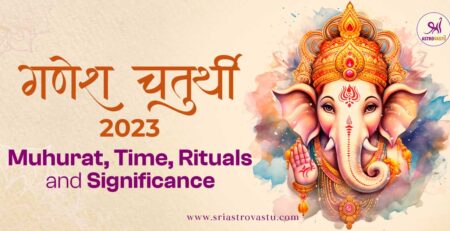Significance of Vishwakarma Puja | Vishwakarma Puja 2025 in Vedic Astrology
A highly esteemed Hindu holiday, Vishwakarma Puja honours Lord Vishwakarma, the gods’ architect, engineer, and craftsman. Artists, craftsmen, engineers, architects, mechanics, and industrial workers have a particular place in their hearts for this puja. They worship Lord Vishwakarma in order to ask for his blessings for skill, inventiveness, and success in their career pursuits. In India and other nations with thriving Hindu communities, the festival is celebrated with great fervour, particularly in factories, offices, manufacturing facilities, and workshops.
In Hindu mythology and Vedic tradition, Lord Vishwakarma holds a special place as the cosmic engineer and the celestial architect. The heavenly palaces, celestial weapons, chariots, and other divine tools used by gods and goddesses are thought to have been created by him, and he is considered the divine source of all mechanical and artistic knowledge. His function goes beyond simple craftsmanship; he represents the ideal balance of imagination, accuracy, and scientific understanding, all of which are strongly related to the tenets of Vedic Astrology.
Every planetary movement, cosmic force, and celestial event is thought to have an impact on both the material and spiritual aspects of human existence in Vedic Astrology. Celebrated on the auspicious day of Kanya Sankranti, which marks the Sun’s entry into the Virgo zodiac sign, Vishwakarma Puja is associated with potent astrological energies.
The qualities that are valued in expert craftsmanship and engineering, such as meticulousness, precision, intellectual capacity, and service, are linked to the Virgo sign (Kanya Rashi). As a result, the day of Vishwakarma Puja has astrological significance since it symbolizes the meeting point of cosmic order and divine creativity.
Who is Lord Vishwakarma?
As the universe’s divine architect, craftsman, and engineer, Lord Vishwakarma holds a unique and elevated place in the vast pantheon of Hindu deities. Vishwakarma is revered as the celestial artisan who created the earth and the heavens. He is more than just a god of building or craftsmanship; he is the embodiment of the cosmic principle of creative power that gives the material world order, beauty, and function.
Two Sanskrit words—Vishwa, which means “universe,” and Karma, which means “action” or “work”—are the origin of the name “Vishwakarma.” When taken as a whole, Vishwakarma means “the one who performs the work of creation of the entire universe.” His cosmic role as the divine craftsman whose creative power transcends earthly bounds to the very formation of the cosmos is encapsulated in this etymology.
Ancient Hindu texts like the Vishwakarma Purana, Mahabharata, and other Puranas claim that Vishwakarma is the son of the creator god Brahma, who created him with the responsibility of creating the gods’ celestial worlds and divine weapons. Because of his unmatched talent, he is recognized for having created:
- The celestial chariots, or Vimana, of deities such as Indra and Kubera,
- The weapons that gods wield, like Vishnu’s Sudarshana Chakra and Shiva’s trident,
- The gods’ magnificent cities, such as Lanka, Indraprastha, and Dwarka,
- The natural order is governed by divine devices, machinery, and tools.
According to certain traditions, Vishwakarma is also considered the guru (spiritual teacher) of all engineers, carpenters, blacksmiths, and artisans, passing down divine knowledge of the arts and sciences across the ages.
Symbols and Characteristics
Lord Vishwakarma’s supreme mastery over creation and craftsmanship is reflected in his iconography. Usually, four hands are shown holding instruments that represent various creative arts:
- A Kamandalu water pot, which represents purity and the flow of creative energy,
- A book that symbolizes wisdom and knowledge,
- A measuring device or scale that symbolizes accuracy and technical proficiency,
- An axe or hammer, representing the ability to mould and construct.
In the four Vedas—Rig, Yajur, Sama, and Atharva—the ancient knowledge bases from which all skills and crafts originate, his four heads are occasionally depicted as representing his omniscience.
Frequently depicted as a throne of celestial materials, Vishwakarma’s seat signifies his elevated position among the gods and his association with divine craftsmanship and cosmic order.
Significance of Vishwakarma Puja
In addition to being a religious holiday, Vishwakarma Puja is a culturally significant celebration that has grown over the centuries to become an essential custom for millions of Indian and international artisans, craftspeople, engineers, and industrial workers. This section examines the long history of Vishwakarma Puja and its cultural significance, highlighting its continued significance as a celebration of divine inspiration and human ingenuity.
Vishwakarma Puja has its roots in the ancient Vedic and Puranic eras, when manual skills and craftsmanship were revered as sacred arts that were passed down through divine intervention. Tools and machines were necessary for survival, building, and advancement in a largely agrarian and craft-based society. Vishwakarma worship developed as a means of sanctifying the tools and requesting the divine architect’s blessings for success, safety, and job perfection.
Although the exact beginning of Vishwakarma Puja has never been documented, it is mentioned in a number of texts, including the Vishwakarma Purana, which honours the deity’s actions and gives followers guidance on how to honour him. From small-scale customs among particular artisan guilds, the festival eventually expanded into a widely-observed event that was attended by people from a wide range of occupational groups.
Vishwakarma Puja Date and Timing for 2025
The Hindu lunar calendar and Vedic astrological principles are closely linked to the celebration of Vishwakarma Puja. Devotees must ascertain the exact date and auspicious timing in order to maximize the worship’s spiritual and material benefits. This section details the 2025 Vishwakarma Puja date, the significance of the timing, and the Vedic Astrological method used to select muhurta (auspicious moments).
The Vishwakarma Puja Date
In the Hindu month of Ashwin, which typically occurs in September or October of the Gregorian calendar, Vishwakarma Puja is customarily performed on the seventeenth or eighteenth day of the Krishna Paksha (waning phase of the moon). Kanya Sankranti, the solar transition of the Sun into the zodiac sign of Virgo (Kanya Rashi), falls on this day. Astrologically, it is significant that the solar transit and the lunar tithi (Paksha) coincide.
In 2025, Vishwakarma Puja is anticipated to take place on:
- Date: Friday, October 17, 2025
- Tithi: Ashtami or Krishna Paksha Saptami, depending on local Panchang variations
- Sun Sign: Kanya Sankranti, or the transition into Virgo
Based on local time zones and customs, devotees and astrologers verify the precise dates and times by consulting regional Panchangs, or Hindu almanacs.
The Significance of Kanya Sankranti in Astrology
On Kanya Sankranti, the Sun enters Virgo, a sign that is renowned in the engineering and craft fields for its accuracy, analytical thinking, and dedication. Mercury (Budh), the planet that governs intelligence, communication, dexterity, and skills, is in charge of Virgo. This astrological coincidence strengthens the power of Vishwakarma Puja because worship performed during this transit aligns the devotee’s energy with cosmic forces that value creativity and craftsmanship.
Preparation: Rituals for Vishwakarma Puja 2025
The preparation for Vishwakarma Puja is as important as the puja itself, as it reflects the deep respect devotees hold for Lord Vishwakarma—the divine architect and craftsman.
Purification, rebirth, and the summoning of constructive cosmic energy are symbolized by the rituals, cleaning, decorating, and mental preparedness. Careful planning is advised for the 2025 celebration, integrating ancient customs with Vedic astrological advice to optimize both spiritual and material gains.
Preparing Offerings and Ritual Items
Offerings to Lord Vishwakarma are prepared by devotees and represent wealth, devotion, and purity. Common offerings consist of:
- Prasadam: Fruits, coconut, laddoos, and other traditional treats.
- Flowers and Leaves: Mango and betel leaves, as well as marigold flowers, are widely used.
- Incense and Lamps: Lighting incense sticks and ghee lamps invites divine presence and purifies the surroundings.
- Tools and Materials: As symbolic offerings, tiny models of tools or the real instruments are occasionally placed.
The care and devotion with which these offerings are prepared reflects the respect for Vishwakarma as the origin of all creative power.
Spiritual and Mental Readiness
Developing a focused, respectful mindset is another aspect of getting ready for Vishwakarma Puja. Frequently, devotees:
Say mantras and offer prayers to Lord Vishwakarma. Consider the importance of their creations and the moral obligation that accompanies them. Express humility and respect for life while pleading for forgiveness for any harm their instruments or actions may have caused.
By bringing the person’s intentions into harmony with the cosmic order, this mental cleansing makes sure that the puja is a spiritually transforming experience rather than merely a ritual.
Keeping the Workplace Clean: Spiritual and Physical Purification
The thorough cleaning and sanctification of the workplace is a crucial part of the preparation. According to devotees, the environment in which creation takes place must be devoid of negativity and impurities, just as the human body must be pure for spiritual activities.
Physical Cleaning
Every tool, piece of machinery, piece of equipment, and work area is thoroughly cleaned. To show respect and to represent the removal of negativity and barriers, dust, rust, and wear are removed. By doing this, the physical world is ready to receive the blessings of God.
Spiritual Cleansing
In order to create a sacred environment that is favourable to spiritual energy, incense sticks, camphor, and sacred water—which is frequently combined with turmeric and vermilion—are used to purify the air and objects.
Decoration
Mango leaves, marigold flowers, and vibrant rangoli (traditional floor patterns) are used to adorn workspaces and tools. The colours red and yellow are common and represent vitality and good fortune.
As a token of appreciation and a symbolic reaffirmation of the artisan’s connection to their craft, this cleaning and decorating ritual serves two purposes.
Fixing and Respecting Equipment and Tools
It is customary to examine all tools, machinery, and equipment prior to the day of puja, fixing any flaws and making sure everything is in top working order. This practice shows the artisan’s dedication to their craft and honours the divine energy thought to reside in these instruments.
Tools that are broken or damaged are either repaired or disposed of with care.
Machines and cars are cleaned and decorated
Since the days preceding the puja are thought to be very advantageous for such investments, new tools, machinery, or equipment may be bought or blessed beforehand.
This custom mirrors the artisan’s own commitment to their work and reflects the idea that the instruments of creation should be treated with respect and care.
Conclusion
Vishwakarma Puja is much more than just a local celebration or tradition. Under the direction of Lord Vishwakarma, the divine architect of the universe, it is a revered acknowledgment of the timeless principles of Srishti (Creation), Rachana (Construction), and Karma (Work). According to the Vedic perspective, creation is a divine duty that preserves the cosmic order (Rta) rather than just a physical act. When their work is done in accordance with Dharma, every craftsman, engineer, mechanic, sculptor, designer, and builder becomes a humble conduit of this divine will.
We have a wonderful chance to re-align ourselves with these holy principles in 2025 when Vishwakarma Puja is celebrated. The planetary vibrations at this time strongly favour growth through discipline, intellect, and devotion to craftsmanship, as the Sun enters Virgo (Kanya Rashi) and Mercury, the planet of skill and intellect, plays a crucial cosmic role.
Devotees invoke not only divine blessings but also the spirit of humility and excellence through the purification of tools, the offering of sincere prayers, and the reflection on one’s creative duty. They are reminded that technology and tools are not just inanimate objects; rather, they are containers of holy energy that must be handled with care and morality.
















 Paytm
Paytm 

